Nepal - A Feast for All Six Senses
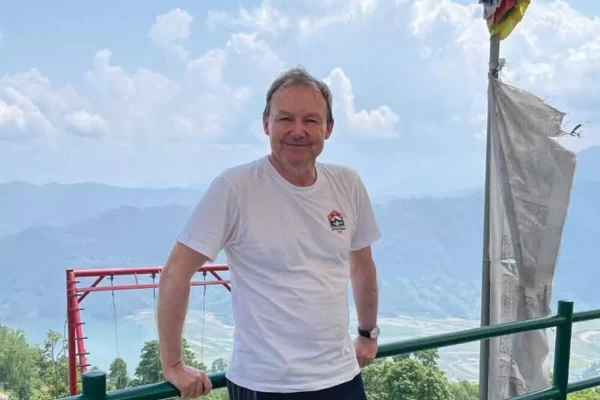
Nepal and Britain share a connection which spans more than two centuries.
Our “friendship in perpetuity” was formalised by treaty in 1923, a rare phenomenon on the global stage. This treaty helped secure Nepal’ s place in the League of Nations and the UN. One hundred years later, it still encapsulates my mission here.
But true friendship requires understanding. Nepal is famously diverse, climbing from near sea-level to the Roof of the World, and stretching from the Hindu Kush to Southeast Asia. A complex mesh of cultures and the dramatic landscapes which shaped them. Understanding Nepal, even a little, requires time to travel within the country, immersing yourself and all six senses.
My travels to see how our development partnership is faring, or on private adventures with my family, allow me to compare and contrast the charms of Kathmandu with other distinct regions. Even when “on business”, professional duties sit sideby-side with recreation.
Lumbini and Kapilvastu: A Feast for the Mind's Eye
A trip to Lumbini, to celebrate Lord Buddha's birthday, will show you what I mean. My wife and I were paying respects at a site revered around the world. But a chance encounter with the Director-General of Archaeology led on to excavations at Kapilvastu which have uncovered substantial traces of the palace where Siddhartha Gautam grew up. Huge trees shade the site, a welcome respite in the heat of the Tarai.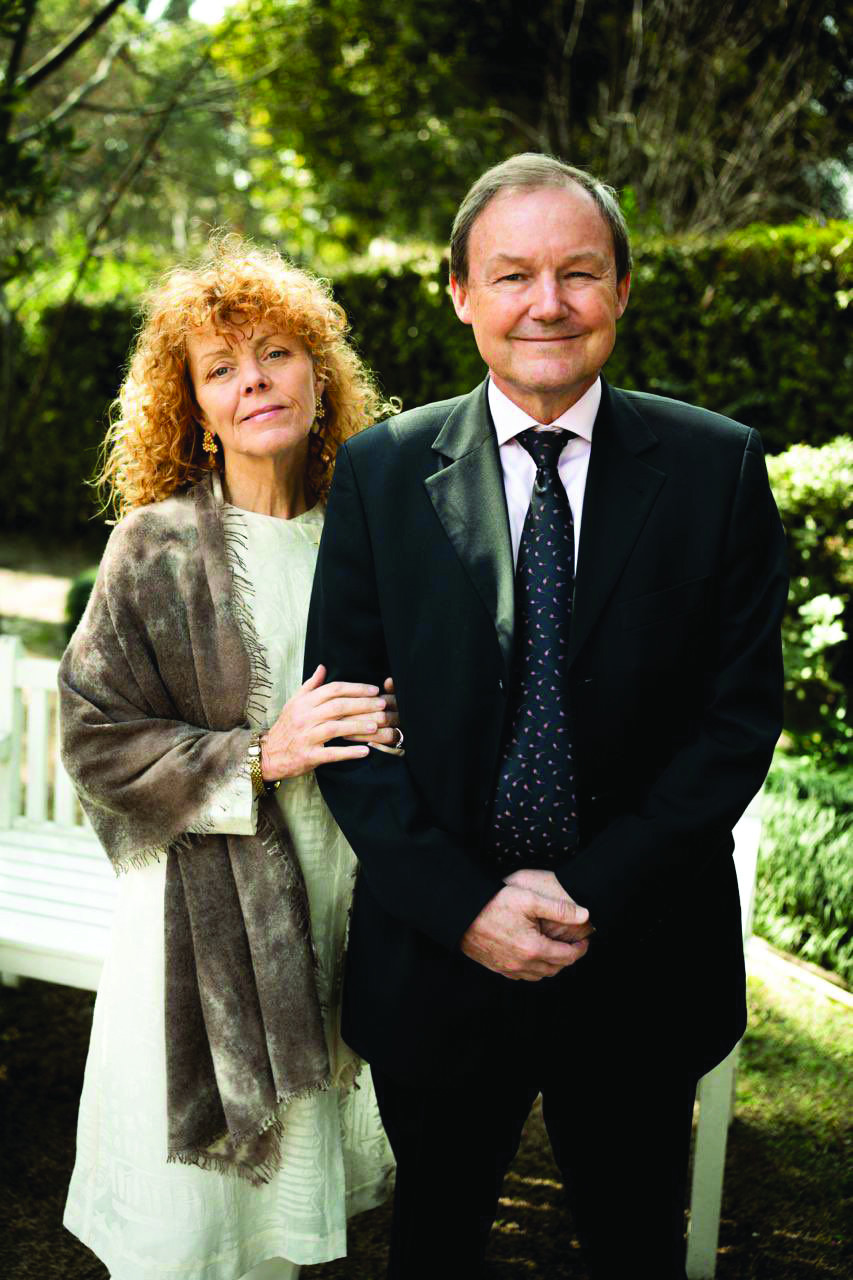 We chatted with expert Nepali archaeologists, several of whom had trained in the UK.
We chatted with expert Nepali archaeologists, several of whom had trained in the UK.
That day was triply rewarding. First, I had the opportunity to see Nepal’ s peace-making potential in action. The speeches at Vesak were all about world peace. Already a UN peace-keeping super-power, Nepal is also the cradle of Buddhism; a religion and philosophy closely associated – in my mind anyway – with moderation, tranquility and peace.
Second, by learning more about the role which Durham University has played in the archaeology of these connected sites, I am uncovering another strong link between the UK and Nepal. Such people-topeople ties have nourished our bilateral relationship for centuries.
Third, in my mind’ s eye, I followed the young prince as he rode out through the East Gate to change the world, leaving his sleeping wife and baby son. Winding the clock back further, I followed Maya Devi ’s route eastwards to the Sal tree grove at Lumbini where she gave birth. As every taxi driver in Kathmandu will testify, “Buddha was Born in Nepal”.
Langtang: Getting to Grips With Trekking
It ’s a day ’s drive from Kathmandu to the well-managed National Park and up to Shaphru Besi. That’s as close to the famous hanging valley as a car can take you. The first day’s trek is all steps (mostly up but also down) on gnarly paving, which reminds you that this has been a highway to high pastures for centuries.
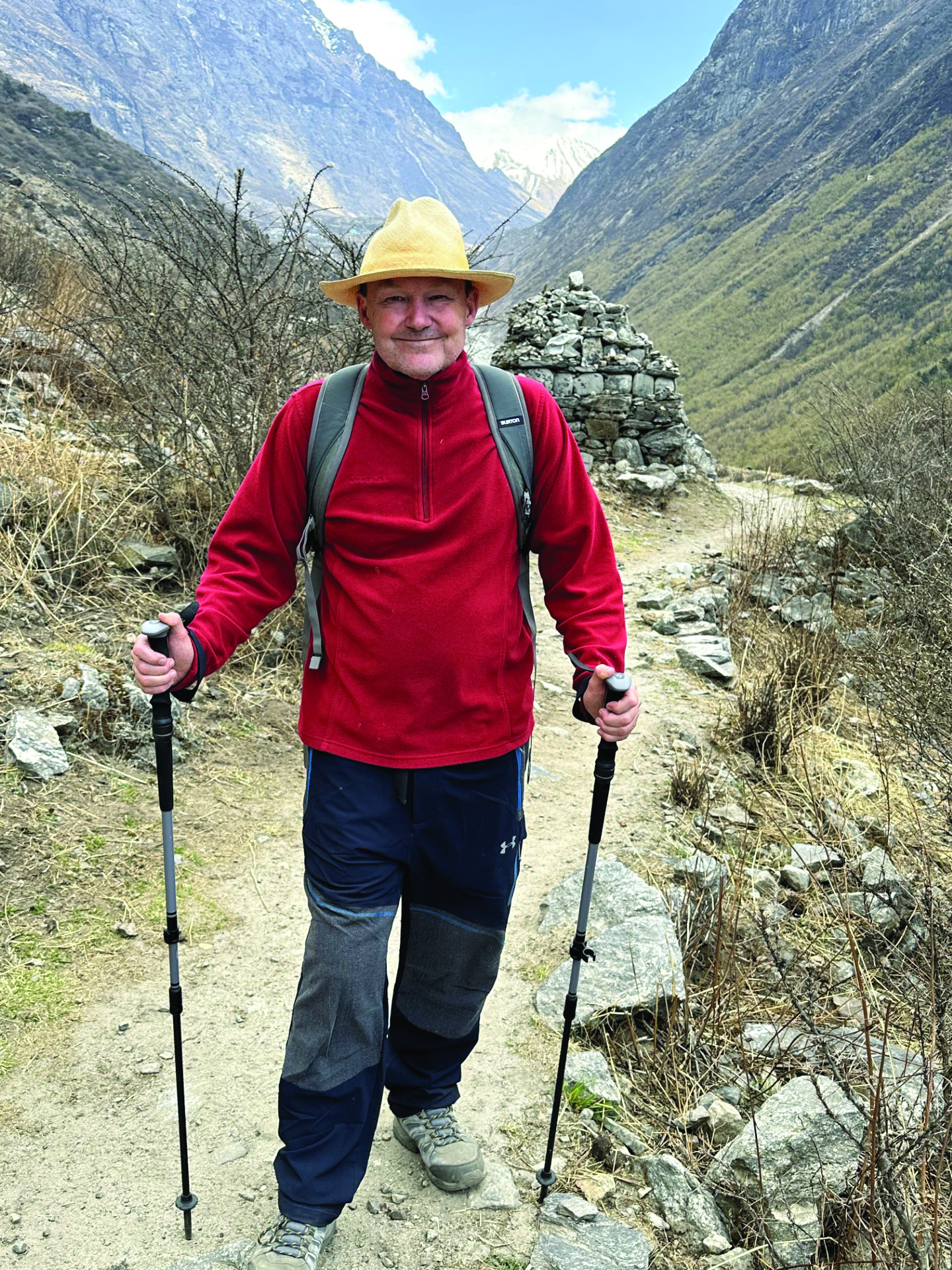 Porters, ponies and younger tourists amble past. The river and forest were constant companions. The steady change in altitude – on the cusp of spring (one of Nepal’s six seasons)- brought changes in the wild-life and flora. We didn’t see a red panda. But I imagined them all round us.
Porters, ponies and younger tourists amble past. The river and forest were constant companions. The steady change in altitude – on the cusp of spring (one of Nepal’s six seasons)- brought changes in the wild-life and flora. We didn’t see a red panda. But I imagined them all round us.
Night One, at Lama Hotel, is still a blur. I was very tired.
But good boots and “dal bhat power” ensured I was raring to go in the morning. Day Two brought the pay-off, as the valley began to open up – like the rhododendrons all round us- and the Himalaya made their presence felt. Everyone carries something to those mountains; and something different back.
I have a jumble of memories from Langtang. Snowy peaks, of course. A water-powered prayer wheel. The sound which bells make in rarefied air. How good a café latte tastes in an unexpected coffee shop. The tactful vigilance of our guides. And throughout the descent – amazement that I had made it up that way.
Princess Sita Was Born in Nepal
In Janakpur Dham (Madhesh), where I went to discuss planning with the energetic municipality (think, street mapping assisted by drones and AI), I learned that I was standing on the Ramayana Circuit. Of course, Princess Sita was also born in Nepal! This was her city, now South Asia’s capital of romance. At the Janaki Mandir the priest in charge seemed quite put out that I had come without my wife.
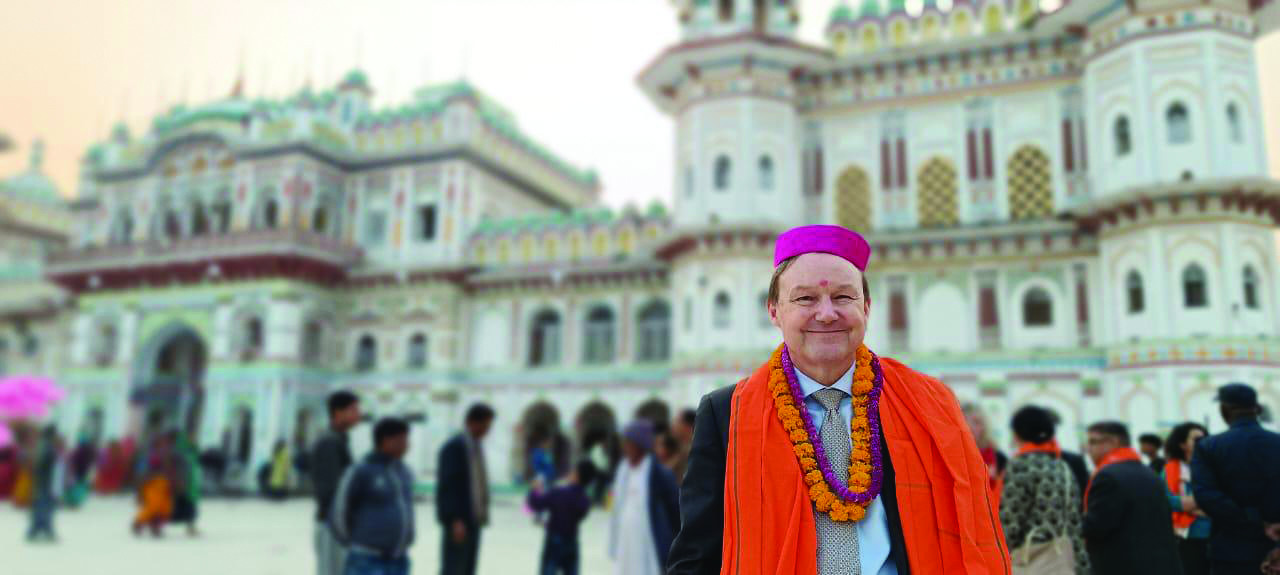
I promised to return and renew our vows. And to have another wonderful- but-affordable meal in the restaurant of Nepal’s MasterChef, Santosh-ji.
My conversation with business leaders in Birgunj was more downbeat. Life is a daily struggle for Nepal’s private sector pioneers. I have nothing but admiration for this country’s entrepreneurs, and I am determined to help Nepal build that bridge to global capital markets, with a strong foundation in The City of London. As my Minister for Development repeatedly declared during his whirlwind visit in February, the private sector is the engine of development.
That Ministerial visit happened mainly by helicopter – thanks to the Government of Nepal. In a day and a half, we saw: the Upper Trishuli hydro- power project (Bagmati); an irrigation initiative in Dailekh (Karnali); a hospital in Butwal (Lumbini) and – back in Kathmandu – a logistics business and a think-tank using IT to overcome the formidable geography we had just flown across.
If you’re in a window seat, look down. From this height, the contours of the landscape seem less extravagant. At ground-level, however, the land rears up and distances zoom-out to days of driving. Weeks of walking. If it were possible to compress the hills and mountains, to spread the surface area of Nepal more smoothly on the map, its true scale would be apparent. But who would want to do that?
Combing Upper Mustang (And a Goat)
Our next journey will be to Upper Mustang, the region of Nepal which lies north of the Himalayas. Home to the Chyangra goat, whose winter undergarment – a layer of fine fibers – gives us the famous wool, cashmere; in other contexts, pashmina.
Several of Nepal’s development partners, the UK among them, are supporting the Chyangra brand. We have helped introduce a low-cost, pedal-driven spinning wheel, which is better for the back than earlier versions. We have escorted exporters to London Fashion Week, woolen mills in Bradford and a goat farm in Aberdeenshire. Now I want to go “upstream” to meet the goats myself. Ideally, to comb one.
Monsoon willing, we will fly to Pokhara and drive to Lo Mantang via a host of places recommended by our friends, including holy Muktinath.
Tourism For Every Kind of Traveller
At Nepal's recent Investment Summit, one of many impressive panel discussions was devoted to trends in the tourism industry. Everyone agrees that this sector has headroom: space for the whole spectrum of experiences and accommodation. From the ubiquitous “home stays” (which Nepal does very well – tapping the hospitality of the population at large), all the way up to the very high end.
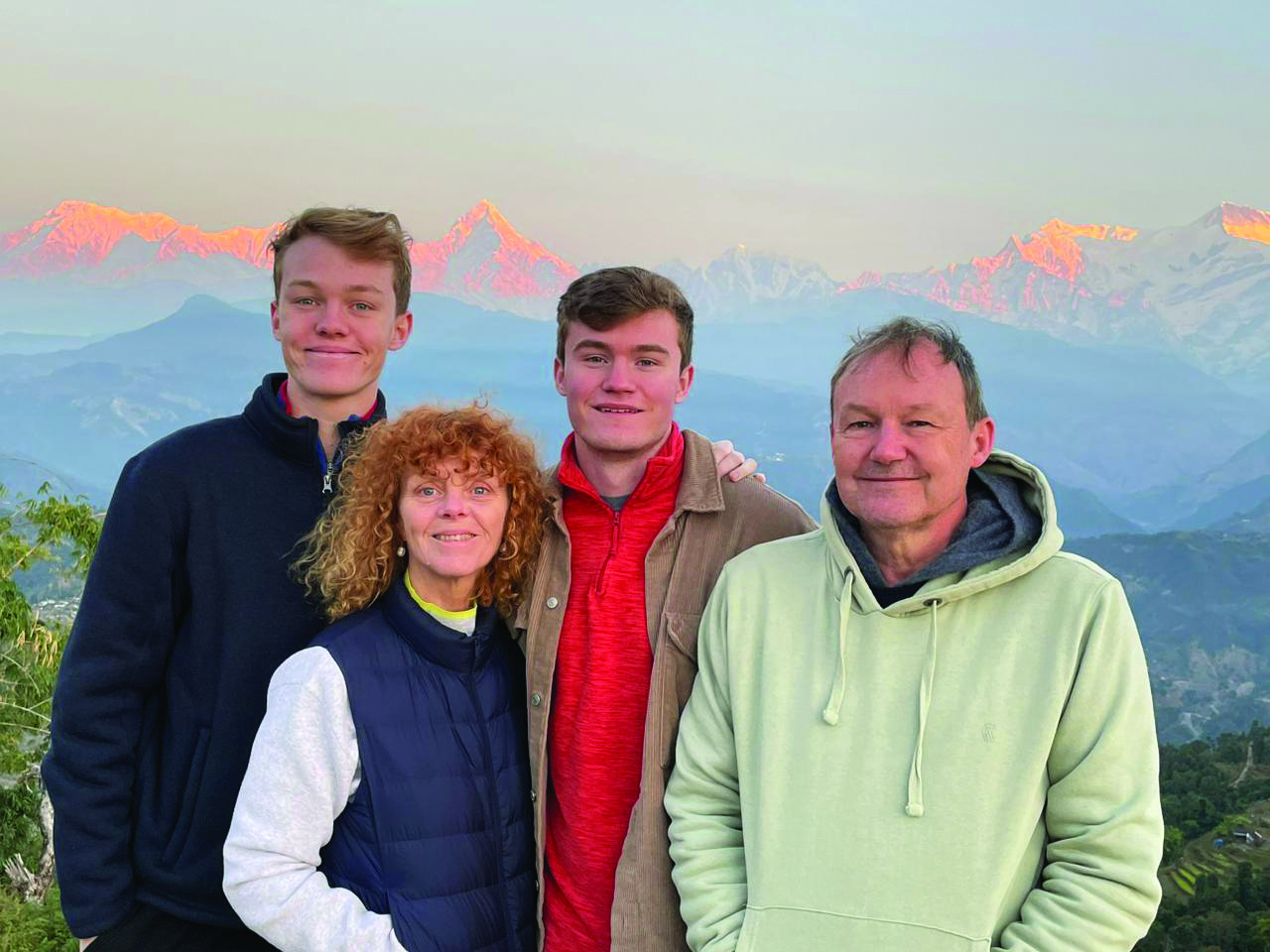
This is not about advertising. Nepal’s brand is already the envy of most other tourist destinations. Nepal has things to show which its competitors can only dream of. The sector has come roaring back, after Covid, with British visitors to the fore.
Two things to keep an eye on (or an ear) are zoning and storytelling. As new parts of the country become accessible to travellers – for example, as hydroelectric infrastructure spawns new roads – all three tiers of government need to stay ahead of the curve. So curated trails, charming teahouses, and where appropriate, new hotels, are there to welcome visitors. Nepal has strong policies and a visible determination to keep things green and sustainable. These rules need to be enforced, so “high end” facilities are able to command high prices.
Secondly, a colleague once told me that the difference between an OK holiday and a holiday-of-a-lifetime is the quality of stories told to the visitor. That’s good news for Nepal. This country is bursting with heart-warming and blood-curdling tales, and with authentic storytellers.
In Sum?
No trite summary is possible of Nepal. Complexity nested in complexity. Which is good news for me. Got to keep exploring...
In conversation with Surendra Rana
